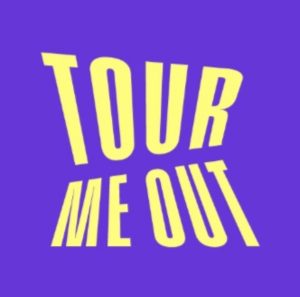Catalan Rumba (Rumba Catalana) is a vibrant and deeply rooted musical genre that emerged in the heart of Barcelona’s working-class neighborhoods, blending flamenco, Afro-Cuban rhythms, and popular Spanish music. Closely tied to the Catalan Gitano (Romani) community, this genre is both a cultural expression and a social phenomenon that reflects the rich, hybrid identity of post-war Barcelona.
Origins: From the Streets of Barcelona
Catalan Rumba originated in the 1950s and 1960s in the neighborhoods of Gràcia, Raval, and especially El Portal (El Portal de la Pau) and Hostafrancs, where large populations of Spanish Roma (Gitanos) had settled. These communities preserved the traditions of flamenco but also lived in urban areas where exposure to other musical influences was inevitable.
Post-Civil War Barcelona saw a mix of cultures due to internal migration from southern Spain (especially Andalusia and Extremadura), and also due to exposure to Cuban and Latin American music brought back by sailors and through radio broadcasts. Cuban “son”, guaracha, and rumba rhythms were circulating through port cities, and Barcelona’s status as a Mediterranean hub made it especially receptive.
The Gitanos began to adapt these rhythms into their flamenco-rooted music, giving birth to something entirely new: Catalan Rumba. It is characterized by:
- 12/8 or 4/4 rhythm, upbeat tempo
- Flamenco-style singing, but more melodic and relaxed
- The distinctive “ventilador” guitar technique, a percussive strumming pattern using the guitar as rhythm and harmony
- Strong emphasis on rhythm and danceability
Wich are the figures and musical Pioneers in Catalan Rumba?
The most iconic name in Catalan Rumba is Peret (Pedro Pubill Calaf), a Gitano from Mataró (near Barcelona), who is considered the founder and main popularizer of the genre. Peret began fusing flamenco singing with the ventilador guitar style and Latin rhythms, giving the rumba its definitive sound.
Other important artists include:
- El Pescaílla (Antonio González Batista): Husband of legendary flamenco singer Lola Flores, considered a precursor of the genre, blending Latin rhythms with flamenco in the 1950s.
- Los Amaya: Two brothers who brought a pop sensibility to the rumba in the 1970s with songs like “Vete” and “Caramelos”.
- Gato Pérez: An Argentine-born musician who settled in Barcelona and rejuvenated Catalan Rumba in the late 70s and early 80s with a poetic, urban style. He sang in Spanish and Catalan and is seen as a cultural bridge between the Gitano world and the mainstream Catalan society.
What is the relationship between Catalan Rumba and Flamenco?
Catalan Rumba is often seen as a “cousin” of flamenco, especially because of its Gitano roots and the use of flamenco singing and guitar techniques. However, it differs significantly in its:
- Rhythm: More syncopated and danceable
- Mood: Generally more joyful and festive
- Structure: Simpler harmonies and repetitive refrains
While traditional flamenco can be introspective or sorrowful (cante jondo), Catalan Rumba is typically celebratory, designed for dancing and communal enjoyment.
Still, the rumba shares flamenco’s emotional intensity, improvisation, and oral tradition. Many artists move fluidly between the two genres.
The Gitano Community and the Soul of Barcelona
The Gitano community has been central to the identity of Catalan Rumba. These Spanish Roma families, who often lived on the margins of society, used music as a means of survival, cultural expression, and pride. In the narrow streets of El Raval or the bustling squares of Gràcia, rumba was not just entertainment. It was a way of narrating daily life.
Despite facing discrimination and exclusion, Gitanos in Barcelona maintained a strong cultural identity, and Catalan Rumba became a symbol of their resilience and creativity.
Furthermore, the music also became a cross-cultural meeting point: Gitanos, Andalusian migrants, Catalans, and Latin Americans all found common ground in the rhythm and spirit of the rumba.
Legacy and Evolution
In the 1990s and 2000s, Catalan Rumba experienced a revival through bands like:
- Ojos de Brujo. Fusing rumba with hip-hop and electronic music
- Macaco. With a more globalized sound mixing rumba, reggae, and pop
- Muchachito Bombo Infierno – Bringing a street-style rock–rumba fusion
The genre continues to evolve while remaining a cultural marker of Barcelona, especially in festivals like La Mercè or in the barrio celebrations of Gràcia and Sants.
Conclusion
Catalan Rumba is much more than a musical genre. It is a living testament to Barcelona’s cultural hybridity, a rhythmic fusion that emerged from the margins and danced its way into the heart of the city’s identity. Rooted in the flamenco traditions of the Gitano community, enriched by Caribbean influences, and adapted by successive generations, Catalan Rumba stands as a vibrant expression of resistance, joy, and cultural coexistence.
It reminds us that some of the most powerful art forms are born not in palaces or conservatories — but in the streets, among communities whose voices demand to be heard.
